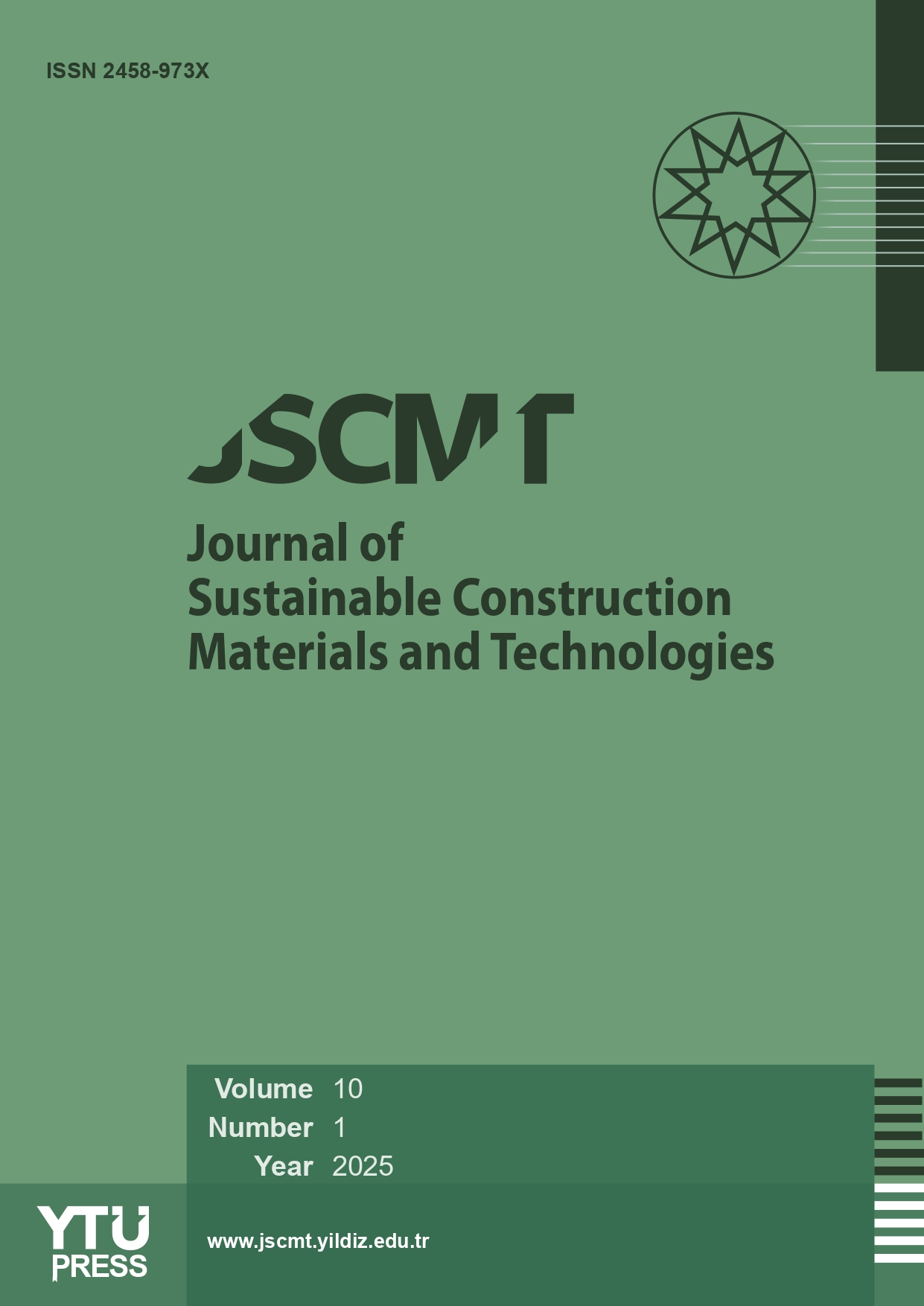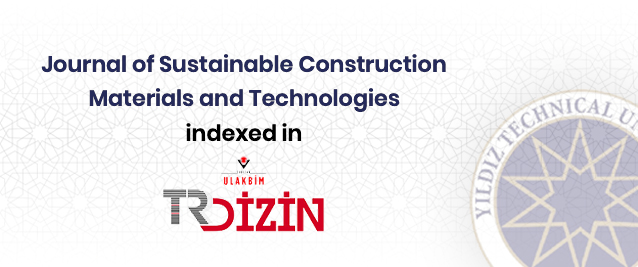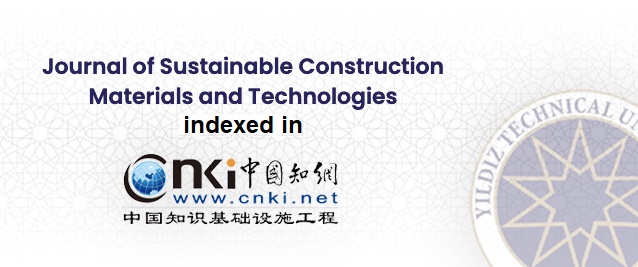2Department of Civil Engineering, Harran University, Şanlıurfa, Türkiye
Abstract
In the present study, the influence of the crumb rubber (CR) utilization as fine aggregate on the engineering properties of fly ash-based geopolymer mortar was experimentally investigated. In this context, the natural sand (NS) used in the production of geopolymer mortars was substituted with the CR, which comes out in the course of applying the retreading process to the end-of-life tires, at the substitution levels of 10%, 20%, 30%, 40%, and 50% by volume. In this way, 6 different geopolymer mixtures, one of which was the control mixture, were designed and produced. Then, the effect of CR on the fresh-state properties like flowability and fresh unit weight and the hardened-state properties like dry unit weight, compressive and flexural strengths of geopolymer mortars were examined. Besides, the properties of CR such as grading, specific gravity, water absorption capacity, fineness modulus as well as surface texture and particle shapes were compared with that of the river sand. In addition, the interfacial transition zone (ITZ) between fine aggregate particles (both NS and CR) and geopolymer paste was viewed using SEM images. When NS was substituted with CR at a 50% level, unit weights decreased significantly, which is considered lightweight mortar; however, no remarkable influence on the flowability was observed. The incorporation of CR, on the other hand, resulted in a reduction in the strength characteristics of the geopolymer mortar. Besides, a weaker ITZ was detected between the CR particles and geopolymer paste. Moreover, the visual appearance of the mixes revealed that the CR particles were well-distributed on the mortar cross-section, namely no bleeding and segregation problems were faced.
As a consequence, it can be stated that the geopolymer mortar can be manufactured by substituting the NS with CR provided that it is at specified substitution levels. For instance, the flexural strength of the mortar was more than 3 MPa even at a 40% replacement level while the compressive strength of the geopolymer mortar dropped under 20 MPa at a 20% replacement level.
















